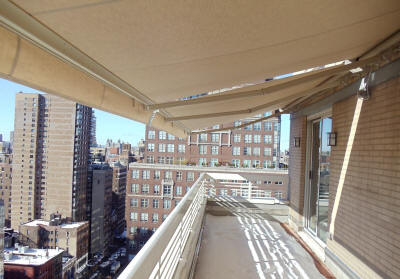Architect Awning Information

Awning Fabric |
 |
Awning Types
|
 |
Retractable Awnings for Architects |
 |
Why Should Architect's Considering Awnings?
-
Awnings are extended coverings:
-
Can be attached to a building
-
Awnings can also be Freestanding
-
They are typically created from tubular steel or aluminum frames and covered with fabric
-
The fabric can be made of acrylic, cotton, polyester, or vinyl laminated fabric
-
Fabric is stretched tightly over the framework
-
Awnings are usually custom fabricated and can be designed to fit most any architecture.
-
Coverage area can range from just a few square feet to hundreds or even thousands of square feet
Energy Savings of Awnings
Awnings can appreciably reduce energy consumption by blocking solar radiation through windows and doors. They also can protect furnishings and carpets from fading due to the sun's UV rays.
Engineering for Unique Specifications
-
Awnings and canopies are available in a diversity of shapes, sizes, materials, and colors.
-
Many awning designs can create more air circulation to dissipate heat buildup in the summer or trap in the heat during the winter months.
-
Depending on the amount of light infiltration preferred, certain fabrics have a lighter-colored underneath side than the topside color, which gives a more different shading effect.
-
Requirements may be to with stand hurricanes, reduce television glare, work with a sound system, accommodate fans, lighting or snow, awnings can be engineered to enhance and handle almost any weather occurrence or designed to support any of your entertainment needs.